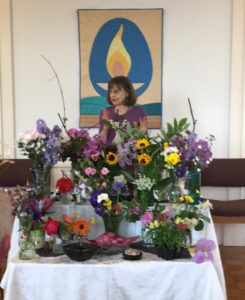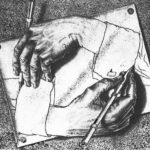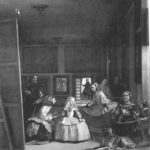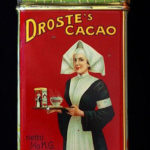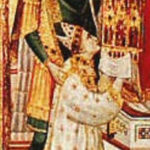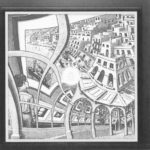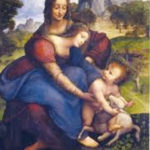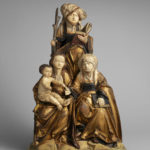By Chris Edwards, with facilitator Robin McNallie
December 29, 2019
Music: “Auld lang Syne”
Hymn #95: “There is More Love Somewhere”
Chalice reading: The Second Coming
BY WILLIAM BUTLER YEATS
Turning and turning in the widening gyre
The falcon cannot hear the falconer;
Things fall apart; the centre cannot hold;
Mere anarchy is loosed upon the world,
The blood-dimmed tide is loosed, and everywhere
The ceremony of innocence is drowned;
The best lack all conviction, while the worst
Are full of passionate intensity.
Surely some revelation is at hand;
Surely the Second Coming is at hand.
The Second Coming! Hardly are those words out
When a vast image out of Spiritus Mundi
Troubles my sight: somewhere in sands of the desert
A shape with lion body and the head of a man,
A gaze blank and pitiless as the sun,
Is moving its slow thighs, while all about it
Reel shadows of the indignant desert birds.
The darkness drops again; but now I know
That twenty centuries of stony sleep
Were vexed to nightmare by a rocking cradle,
And what rough beast, its hour come round at last,
Slouches towards Bethlehem to be born?
1920 — Source: The Collected Poems of W. B. Yeats (1989)
Script key: Words in plain black type were spoken by Chris Edwards
Words in boldface were spoken by Robin McNallie
A partial government shutdown was in effect when 2019 began – lasting 35 days, the longest in history. The current president wanted more money for his border wall.
Around the world this year, deadly earthquakes hit Chile and Albania. A cyclone in Mozambique killed 1,000. A volcano in Indonesia sent up a 7,000-meter ash column. A power outage affected 50 million in Argentina, Uruguay and Paraguay. Smoke from Amazon rainforests burning traveled 1,700 miles.
Two hundred people died in monsoon floods across India, Nepal, Bangladesh and Pakistan.After Hurricane Dorian, 1,300 were missing in the Bahamas. This month brought a typhoon in the Philippines, a landslide in Burundi, a volcano in New Zealand.
Some of the best-known people who died in 2019 were:
Authors: Toni Morrison
and Elizabeth Spenser
Poet Mary Oliver
Performers and other celebrities:
Peter Fonda
Diahann Carroll
Carol Channing
Andre Previn
Doris Day
Don Imus
Gloria Vanderbilt
Musical composer Jerry Herman
Newscaster Cokie Roberts
Psychologist-guru Ram Dass
Retired Supreme Court Justice John Paul Stevens
Robert Mugabe, Zimbabwe’s former president
John Dingell of Michigan, longest-serving member of Congress (59 years)
Elijah Cummings, civil rights activist and Congressman from Baltimore (died in office)
Ross Perot, billionaire and 1992 presidential candidate
David Koch, a billionaire of Koch Brothers fame
Jeffrey Epstein — billionaire and convicted sexual predator, died in jail from alleged suicide
Ab? Bakr al-Baghdadi – head of ISIS, killed by US forces
Johan Baptist Metz, a priest and theologian who emphasized salvation “of the people, of the many” over individual salvation.
We listed deaths. Who was born? When new lives begin among the world’s 7.8 billion, we rarely know who will become world famous, or notorious. A likely exception is Archie Harrison Mountbatten-Windsor, born May 6 to Prince Harry and Meghan Markle. Is such fame good luck, or a burden?
Rallies and marches are up. This year, on Harrisonburg’s Court Square, we marched for climate action, the ERA, immigration reform, rights of the Kurdish people, fair working conditions in poultry plants, building a new school, and opposing ICE policies.
After more than a year’s debate about building a second high school to relieve massive overcrowding at Harrisonburg High, city council this month voted 3-2 for an $87-million school, with athletics facilities included, to open in Fall 2022, south of Stone Spring Road between Main St. and 81. The tax rate must increase.
This month the Middle River Regional Jail approved a $96-million expansion.
By unanimous vote of its supervisors, Rockingham became a “2nd Amendment sanctuary county,” meaning giving sanctuary not to people or other living things, which “sanctuary” traditionally means, but to guns. 90% of Virginia’s counties have done this. One, our neighboring Augusta County, thus became the subject of an article in an international news magazine, The Economist.
Once again our region becomes world-famous! But legal experts call the resolutions “largely symbolic.”
FUEGO (Friends United for Equity and Grassroots Organizing) formed this year out of concern over local expansion of the immigration enforcement agency, ICE, and to educate immigrants about their rights. The group protests the sheriff’s honoring “detainers,” federal orders to hold jail inmates for extra time if there is any question about their immigration status.
A Restorative Justice program began getting underway in Harrisonburg. Activists continue to call for abolishing the dollar-a-day “keep fee” for jail inmates.
In August, the 400th anniversary of the first enslaved people’s arrival in the New World was marked near the site, at Jamestown, Va., with somber reflections, celebrations of endurance and bells rung across the nation. Keynote speaker Gov. Ralph Northam had been disgraced in February when his medical school yearbook from 35 years ago seemed to show him in blackface. “I’ve had to confront some painful truths,” Northam said. He’s supporting LGBTQ protection, Confederate statues’ removal, and moderate gun control, which triggered that so-called sanctuary counties movement.
In November, Democrats swept both houses in the General Assembly, though Republican incumbents won locally.
Across America, unemployment is low; financial markets are doing well; but the FBI reported last month that hate crime violence hit a 16-year high. The 2019 deficit was recently reported as $984 billion — an increase of 68% since the current president took office. This Spring, 700K people will be taken off food stamps.
On our southern border, 69,550 children have been detained this year alone. Over the past 3 years, many were torn screaming from their parents, with some kept in miserable conditions. At least 7 children have died in custody. These events followed policy decisions by the president and his aides who said that making conditions harsh enough would prevent more of those aliens trying to come.
There have been some reforms, but as of October, the number of refugees admitted to the US dropped to zero for the first time in over 30 years.
A columnist said this past “teen” decade has brought “a surge in wokeness, but also white nationalism.” Access to more information promised to benefit democracy, but disinformation hurts it.
A New York Times article is entitled “No one believes anything.” It asks, How do you have a society without shared reference points? Will we give up trying to sort out the information bombardment?
“Autocracies that look like democracies are a threat,” reports journalist Richard Carney. Longtime rulers were ousted by popular demand in Algeria, Sudan and Bolivia, but Russia put down a rebellion in Georgia.
Since June, over a million people have protested in Hong Kong – first against proposed legislation allowing extradition to China. Since that plan was withdrawn, protests continue over wider issues about regaining democracy in Hong Kong, despite flare-ups of violence.
AND… In April, after a two-year investigation of Russian interference in the 2016 U.S. elections, special prosecutor Robert Mueller neither exonerated nor charged the president, but concluded Russia has been interfering with our elections.
On Sept. 24, following a whistleblower’s tip that the president in July asked Ukraine to look for evidence against his political rival in return for weapons, House Speaker Nancy Pelosi announced the start of a formal impeachment inquiry against the president.
I try not to mention that person’s name. I’ll only quote Max Boot, a lifelong conservative, who criticizes Senate Republicans for protecting “a crude and cruel demagogue.”
On Oct. 31, the Washington Nationals defeated the Houston Astros to win their first World Series title!!!
Public impeachment hearings began Nov. 13.
We happened to be at the Kennedy Center, on Dec. 18, seeing “Come from Away,” a musical about the days after 9/11 when all flights were cancelled and the people of Gander, Newfoundland warmly welcomed and accommodated 7,000 stranded passengers. During the first song and dance, my iPhone dinged (I’d forgotten to turn it off). A two-word message on a news app read, TRUMP IMPEACHED. Everyone remembers where they were on 9/11. We’ll remember where we were on 12/18, too, with different feelings.
Nearly 30 Democratic candidates began debating in June for the presidential election. (Nov. 3, 2020. Be there!) By December, seven remained qualified for the debate stage, based on measures of support: Biden, Buttigieg, Klobuchar, Sanders, Steyer, Warren and Yang. Yang, whose ancestry is Taiwanese, expressed disappointment with being the only non-white left, but more hope to return.
No consistent frontrunner has emerged, but for the first time, we have heard a candidate speaking for “the religious left,” another looking ahead to address the colossal unemployment that technological wonders may bring, and everyone wanting to fight climate change and provide health care for all, though details get confusing. My personal disclosure: I’m convinced that whatever their flaws, each of these major candidates has good human qualities and a commitment to democracy. Virginia will vote in the Super Tuesday primaries March 3.
Several Republicans hope to challenge the incumbent for their party’s nomination, but some states’ GOP officials have cancelled primaries and caucuses at the apparent request of that incumbent, who hints at maybe remaining in office for life.
A British report says freedom of expression has reached a ten-year low globally, due to “digital authoritarianism” and threats against journalists. Even efforts by social media to fend off misinformation and cyber-bullying can themselves suppress expression.
Twenty-one journalists were killed around the world, 10 murdered.
But that was the lowest number killed in 17 years.
This month, Saudi Arabia convicted and sentenced suspects in the murder of journalist Jamal Khashoggi, but the crown prince believed to have ordered it never faced trial. In September, our President sent missiles and 200 troops to Saudi Arabia following an attack on its oil refineries.
During Holy Week, a fire engulfed Notre–Dame Cathedral in Paris, resulting in the roof and main spire collapsing. This week, we learned that the cathedral’s main structure may be too damaged to save.
Overseas disasters killed 346 passengers in the two Boeing 737 MAX airliners, and 51 worshippers in terrorist attacks on mosques in New Zealand by an Australia-born gunman. (1.5 million videos of that rampage were posted on Facebook before it disabled them.) In Khartoum, Sudan, 100 protesters were massacred.
The most deadly among this year’s American shootings: In May, a Virginia Beach city employee killed 12 people, prompting Gov. Northam to propose the gun reforms. In August, 22 were killed by a shooter in E Paso, followed the next day by a shooting in Dayton, OH, killing 10.
Scientists from the Event Horizon Telescope project announced the first ever image of a black hole, located in the centre of the M87 galaxy.
Voters in the UK supported breaking from the European Union (Brexit) in 2016, but 400,000 marched this year in central London to protest it. Nevertheless, Boris Johnson, who is pro-Brexit, was elected Prime Minister after Theresa May resigned. Some commentators fear Brexit will weaken England, especially if Scotland and Northern Ireland choose to remain in the EU.
Fossil fragments found in the Callao Cave in the Philippines reveal the existence of a formerly unknown human species. Homo luzonensis is named after the island where it was discovered, Luzon.
A New York Times investigation this Fall revealed that Russian planes bombed at least 50 hospitals and clinics in Syria.
Severe human rights violations have been reported in Chile.
The Gaza–Israel conflict escalated when the Israeli military launched airstrikes into Gaza, killing innocent civilians, after two soldiers were injured from Gazan sniper fire. But in a relatively quiet season, Christmas tourism was predicted to increase.
The 2019 FIFA soccer Women’s World Cup, held in France, was won by the United States. Team members protested being paid less than our less-successful men’s soccer team.
“Dozens rally for Equal Rights Amendment” was the top headline in the Dec. 6 DN-R.
The ERA was treated as a dead issue since the ‘80s until its recent revival.
Virginia will be the final state needed to ratify it, if the General Assembly does next month.
But 3 states have filed suit questioning its legality.
The European Parliament elected the first woman, Ursula von der Leyen as President of the European Commission.
This year for the first time, women slightly outnumber men in American medical schools.
Wikipedia’s 2019 news timeline includes a number of countries’ reforms in policy toward LGBTQ citizens, ranging from ceasing their execution to allowing same-sex marriage.
Vocabulary issues: A headline last week about “Merriam-Webster’s word of the year” meant acceptance of the pronoun “they,” in lieu of she or he, for people who do not identify with a gender. But some biased language has made gains, such as the expression, “OK, Boomer.” [If anyone says that to me, I can tell them I’m too old, by a few months, to be a Boomer. I’m a Silent, who dislikes stereotyping.]
India eliminated triple talaq – a practice that allowed a man to divorce his wife by saying “I divorce you” 3 times.
NASA astronauts Jessica Meir and Christina Koch conducted the first all-female spacewalk.
Abortion became legal in the Republic of Ireland. Research is underway for a once-a-month birth control pill.
Books have arrived this year by Bill Bryson about the human body, David Maraniss about his father’s trouble in the “Red Scare,” Toni Morrison’s final book, a memoir; journalist David Rezaian’s about his year and a half in an Iranian prison, Margaret Atwood’s sequel to “The Handmaid’s Tale,” and Stephen King’s “The Institute,” a dark fantasy reminiscent of real horror on our border.
Avengers: Endgame became the highest grossing movie of all time.
This year has produced some movies about heroes: Bruce Springsteen in “Blinded by the Light,” Mr. Rogers in “A Beautiful Day in the Neighborhood,” and going deeper, Harriet Tubman in “Harriet” — the fearless woman born into slavery who helped many others escape. (Her portrait was in line for placement on the $20 bill in 2020, the 100th anniversary of women’s suffrage, until treasury secretary Mnuchin nixed it until at least 2028.)
In September, 500,000 people marched in a climate protest led by Greta Thunberg, the 16-year-old activist from Sweden, and Prime Minister Justin Trudeau in Montreal. Four million went on strike around the world.
The Republic of Ireland promised to plant 440 million trees in twenty years.
The weather agency NOAA reported that July 2019 was the hottest month on record globally. At the international conference on global warming, this month in Madrid, UN Sec-Gen Antonio Guterres reported that “the last 5 years have been the hottest ever recorded. Sea levels are the highest in human history.”
Biodiversity loss was reported “accelerating”, with over a million species threatened by extinction, largely from human actions.
According to a Washington Post editorial this week: If nations met their Paris climate commitments, which several big emitters, including the US, have not, the world will have a good chance of limiting warming to 3 degrees C by 2100. That would still “not be pleasant,” with mosquito-borne illnesses and other ordeals.
One positive: the cost of renewables has recently plummeted.
Russia this year adopted the Paris agreement, from which the US president is in the process of removing our nation.
Astronomers announced the detection of water in the atmosphere of exoplanet K2-18b, the first such discovery for an exoplanet in the habitable zone around a star.
Oh – and our government is on high alert until New Years Day about the “Christmas gift” that Kim Jong-Un hinted North Korea would send the US.
But remember the president once said he and Kim had fallen in love? Not to worry!
This year the last Volkswagen Beetle rolled off the line in Puebla, Mexico, and the Thomas Cook agency – of Cook’s Tours fame – went bankrupt, stranding 600,000 tourists.
This month a cave painting was found in Indonesia that archaeologists call the “oldest story ever told.” The hunting scene with supernatural beings may date back 44,000 years – some of the earliest figurative art known anywhere.
Preserving it may be tough, however. The surface of the cave is peeling, due to local pollution, climate change affecting the seasons, or both.
